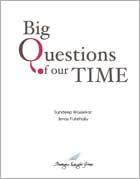Innovations & Food Security in Bangladesh
|
|
November, 2010
By Sowmya Suryanarayanan
|
Over the years, Bangladesh has addressed some of the challenges it faces in sustaining food security. With the area under cultivation being stagnant, introduction of high yielding varieties of rice boosted food production in the country. Along with this, efficient irrigation technologies tackled the problem of scarce freshwater resources. Bangladesh however, is likely to face extreme climatic variations in the future that will severely affect food production in the country. Innovations in rice production will play a major role in helping farmers adapt to extreme conditions and secure livelihoods in the coming years.
Since its inception, the Bangladesh Rice Research Institute (BRRI), has developed and distributed around 57 High Yielding Varieties (HYV) of rice. The use of HYV, which covers almost 65% of the rice area in the country, increased the rice production from 16 million tons in 1970s to 38 million tons in 2000-01. This significant increase not only led to food-grain sufficiency but also contained poverty in the country.
In 2005, flood tolerant paddy was developed by BRRI along with International Rice Research Institute under the Submergence and Flood Prone Environment Agriculture Project of the Consortium for Unfavourable Rice Environment. The farmers in the northern districts of the Brahmaputra River floodplain have benefited tremendously since the new paddy has the potential to withstand flood waters for ten consecutive days as compared to traditional varieties of rice that could survive for a maximum of three days underwater.
In 2010, new saline-resistant paddy, known as BRRI Dhan 47, has been introduced in the coastal districts of Bangladesh. This has the potential to withstand 12-14 dS/m of soil salinity at the initial stages as compared to the conventional HYV that are below 4 dS/m. Over a million hectares of the 2.5 million hectares of the coastal area has been affected by different levels of salinity. The rice grown on soil with high salinity levels is of poor quality and is therefore sold at a lesser price than the conventional rice in the coastal community markets i.e. less than 50 US cents per kilogram. However, the saline resistant paddy will enable poor farmers to sell their produce at the same price as conventional rice, thereby providing them with sustainable incomes in the future.
In addition, the saline resistant paddy will enable poor farmers to secure their landholdings that have been leased at cheap prices to large shrimp farmers. According to the 2001 census, there were around 37 million people living in the coastal districts of Bangladesh. A large percentage of the farmers from these districts migrate to cities and work as day labourers. The coastal population is expected to increase to approximately 44 million in 2015. Adoption of saline resistant paddy will generate employment opportunities as compared to shrimp farming and thereby limit the migration of poor and landless farmers to urban centres.
Apart from flood and saline resistant varieties of paddy, drought tolerant paddy is expected to be released at the beginning of next year for farm-level cultivation. Drought prone T. Aman area covers around 4.2 million hectares in 46 districts of the country. Depending on the intensity of the drought, approximately 15% to 60% of yield losses occur every year in T. Aman. The newly developed drought tolerant paddy can survive up to a month without irrigation. Given that there is very little scope for further expansion of irrigation infrastructure in the country, this new variety provides huge potential for increasing the rice production with existing technology and constraints in the availability of water resources.
In Bangladesh, millions of people depend on rice for their survival. Poor people spend about one-third of their income on rice. Rice contributes roughly one half of the agricultural Gross Domestic Product of the country. Increase in food productivity will increase farm incomes and this in turn will bring down the poverty levels in the rural areas. Furthermore, as rice production increases, the prices of food will substantially go down, which will benefit the landless labourers and the urban poor.
However, as the percentage of urban population increases, achieving higher food productivity and lower food prices will be difficult without the provision of proper agricultural incentives to farmers. Nevertheless, the introduction of HYV of rice specifically for flood-prone, saline-prone and drought-prone environments has the potential to maintain the future demand-supply balance for rice in the country. More importantly, proper dissemination and large scale adoption of these new innovations is required to achieve long-term food security in Bangladesh.
Scientists have predicted that climatic variations will have disastrous effects on food production in Bangladesh. Whilst the precise impact of climate change on Bangladesh remains to be seen, these innovations could help close the gap between actual and required rice yields thereby offsetting the impacts of climate change.
Related Publications
-
.jpg&maxw=50)
Big Questions of Our time: The World Speaks, 2016
Download:Big Questions of Our time: The World Speaks _Full Report
-

-

Second Freedom South Asian Challenge 2005-2025, 2005
read more
Download:Second Freedom South Asian Challenge 2005-2025 Full Report
Related latest News
Related Conferences Reports
-

Global Challenges Conference, October 2016
Download:Global Challenges Conference Report
-

Conference on Responsibility to the Future: Business, Peace and Sustainability, June, 2008
Download:Global Security and Economy: Emerging Issues


